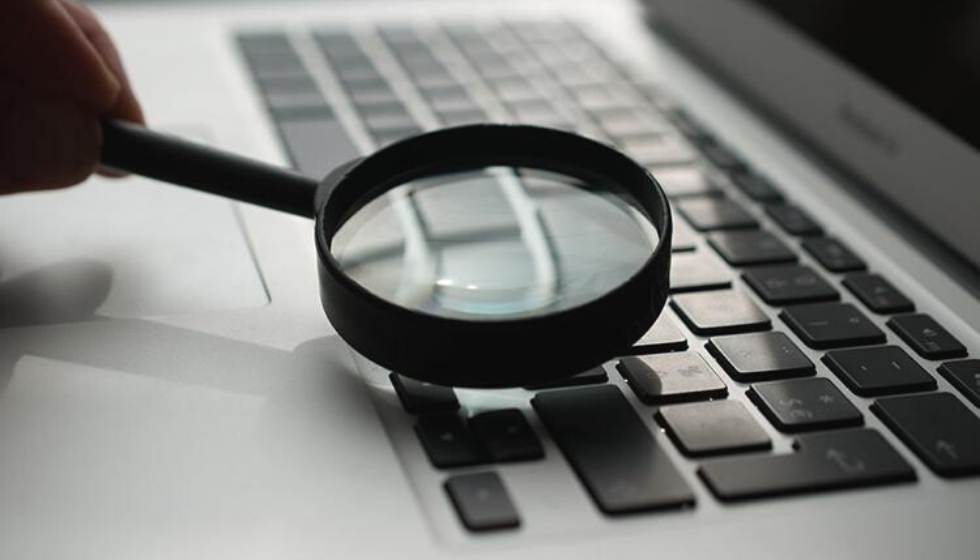As the influencer marketing industry grows, more and more people want to get into the game. Influencers have helped many brands achieve a positive ROI on campaigns for brand awareness, follower engagement, and even increased sales.
Yet, with so many influencers out there, it can still be challenging to find influencers who are the right fit for your brand. Influencers not only need to align with your brand’s mission and values, but they also need to have healthy and authentic profile metrics.
According to a survey of marketers, 50% said their top concern when working with influencer marketing was spotting fake followers and inauthentic social media activity.
Fake influencers may be challenging to detect if you’re not trained on where to look. Fortunately, we can turn to data analysis to get a clearer, more confident view of influencer profiles.
Before you search, know what you want
Before you even start looking for influencers, you must define your marketing campaign. You want to make sure your objective is clear, so you can make goal-focused decisions as you progress.
When defining your campaign, ask yourself the following questions:
● What is the goal of this campaign?
● Which key performance indicators (KPIs) will I use to track my progress?
● Who is my target audience?
● How many influencers do I want to work with?
● What can I offer them in terms of incentives?
Should choose the influencers you work with to help you reach your target audience and work toward your goals. Further, what you can offer in incentives will affect what type of influencer you can collaborate with, so it’s critical to have these points established from the start.
Where to Find Influencers for Marketing
Before we talk about how to spot fake influencers, we need to cover where to find influencers in the first place. There are three primary options available, each with its pros and cons.
First, you could search directly on social media. The pro to this option is that it’s free, but the downside is that your search will take longer. Social networks aren’t search engines, so you may not be able to find exactly what you want quickly.
Second, you could hire an influencer marketing agency to find and vet influencers for you and manage and monitor your campaign. This means much less work for you, but agencies come with a hefty fee. Be prepared to spend hundreds, if not thousands, of dollars per month.
Finally, a third option is subscribing to an influencer marketing platform. This type of software is an influencer search engine and analytics platform. You can search for influencers by category, follower count, engagement, and more. Then, get analytics data about their profiles. The potential downside to this is that you have to pay to use these platforms.

Whatever method you choose is up to you. But regardless of where you search, you have to evaluate some key metrics to make sure the influencers you’re choosing are the real deal.
How to spot and avoid fake Influencers
As we said earlier, influencers can buy fake followers and engagement. And as no brand’s target audience is bots, you want to make sure you don’t fall into the trap of collaborating with influencers whose audiences or activity are fraudulent.
There are various metrics you can examine to determine if an influencer has faked their profile. Let’s run through them now.
Follower Growth over time
An influencer’s number of followers is significant because it determines their reach and the price of their services. However, it’s perhaps even more important to look at how the influencer got their followers.
Plot out the influencer’s growth visually. Healthy growth should look like a gentle climb. This shows that it is organic and attracted the influencer’s followers to their profile because of their content. Organic growth takes time and may increase in small increments. But these followers are more likely to stick around.
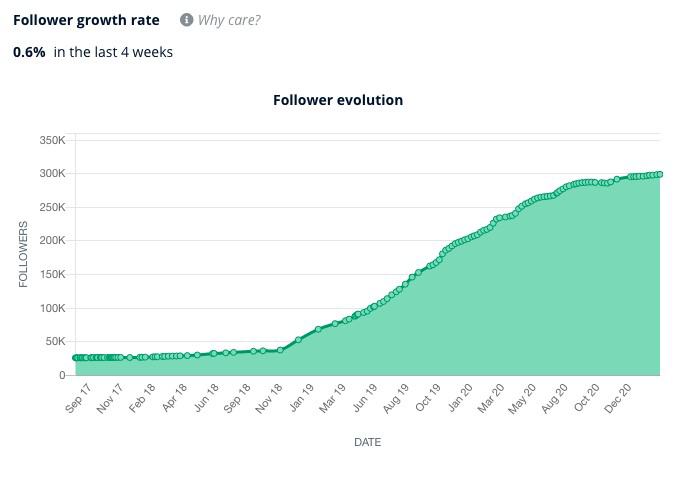
However, if you see spikes and dips in growth, you need to do more legwork to see what has caused them. Did the influencer recently host a giveaway? These generally require eager participants to follow the influencer to enter the competition, and this can show up as a sudden bump in followers.
Or maybe the influencer became famous for some reason? They may have gone viral on or offline or perhaps made their acting debut in a new TV series. See if there is a logical reason for getting a bunch of new followers at once. In the absence of anything like this, then the explanation may be shadier: the influencer probably bought a batch of fake followers.
If you’re using an influencer marketing platform or working with an agency, you can quickly get this information. If you’re searching on social media directly, you may have to ask an influencer for their internal analytics information to verify their growth.
Engagement Rate
Engagement rate measures the level of interaction between an influencer’s followers and their content. The more the audience trusts the influencer and enjoys their content, the more likely they are to interact with it somehow.
Average engagement rates vary depending on the social network and number of followers. So, you can’t compare Instagram influencers to TikTokers, or influencers with 5K followers to those with 5M. Generally, the higher the follower count, the lower the engagement rate. Therefore, it’s essential to always compare influencers against their peers and know the engagement averages for the network and follower segment you’re evaluating.
Watch out for extremely low or high engagement, as it is usually a warning sign. If attention is deficient, it means one of two things: either the audience isn’t interested in the influencer’s content, or the influencer bought fake followers, which don’t interact with their content.
On the other hand, if engagement is suspiciously high, it’s probably too good to be true. Influencers can also buy fake likes, comments, and different types of interactions. So if, for example, most influencers on that network in that follower segment have 3% engagement, and the one you’re looking at has 30%, that is likely the reason.
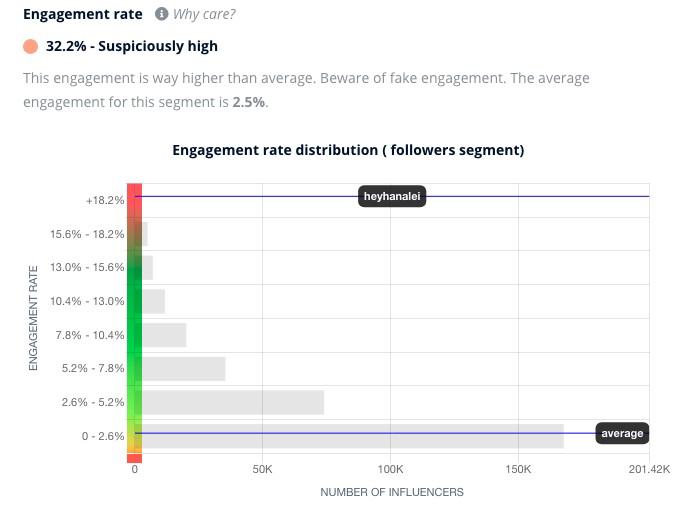
Agencies and influencer marketing platforms can provide this information. Or, you can calculate engagement manually by adding up all the interactions on a post, dividing it by the number of followers, and multiplying it by 100. Do that for a sample of the influencer’s posts, and you’ll get the average. Or ask an influencer for their internal metrics to check their engagement.
Followers/Following Ratio
The follow/unfollow strategy is another tactic influencers use to up their follower count without relying on engaging content. With this strategy, influencers follow random accounts and wait for those accounts to follow them back, then unfollow them.
These followers are real people, but they’ve followed the influencer for the wrong reason. They aren’t necessarily genuinely interested in the influencer’s content. Instead, they were trying to be polite.

If you compare an influencer’s number of followers to the number of accounts they’re following, you can get a sense of whether or not they’re doing this. If the ratio is close to 1, the influencer is probably using the follow/unfollow strategy.
Comments/Likes Ratio
Some influencers buy fake likes but not counterfeit comments. So, analyzing their ratio of words to likes can show you if an influencer may have indeed purchased fake likes. You can examine this directly on social media, post by post, or use an influencer marketing platform to get an automatic analysis.
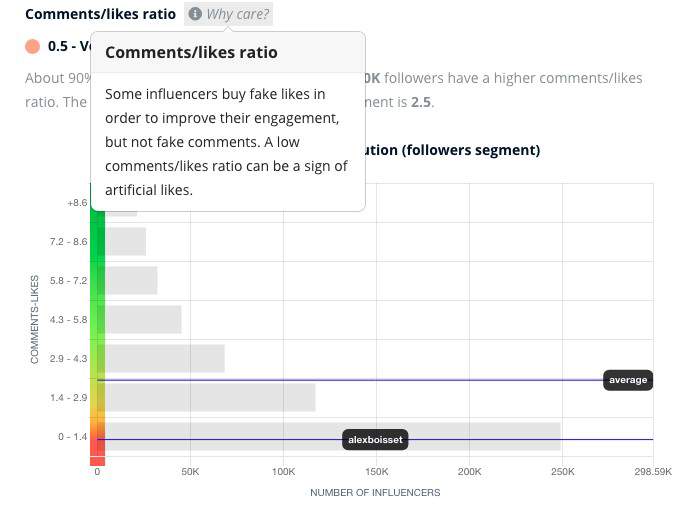
Audience Demographics
Next up, check into the influencer’s audience demographics. Look into their age, gender, country, language, and interests.
It’s essential to vet the audience for two reasons. First, you want to make sure that your audience matches your target audience. While you expect that influencers and their audience will have certain things in common, we shouldn’t assume they’re a perfect match with the audience we want to reach.
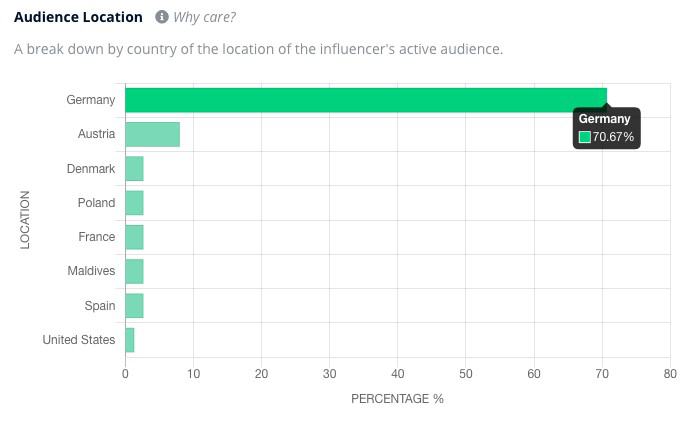
Second, looking at audience demographics could potentially reveal bot followers. Look for suspicious demographics that don’t make any sense when compared with the influencer and their content.
For example, suppose you have a New Delhi-based influencer who typically posts in Hindi but an audience primarily located in another country and speaks an entirely different language. In that case, it could be a sign of bots.
To get this information, use an influencer marketing platform, consult with your agency, or request audience data from the influencers you’re interested in working with.
Audience Authenticity
In addition to demographics, you should also evaluate an influencer’s audience authenticity. You may not have access to this information without the help of an influencer marketing platform or agency, but if you do, it’s something worth looking into.
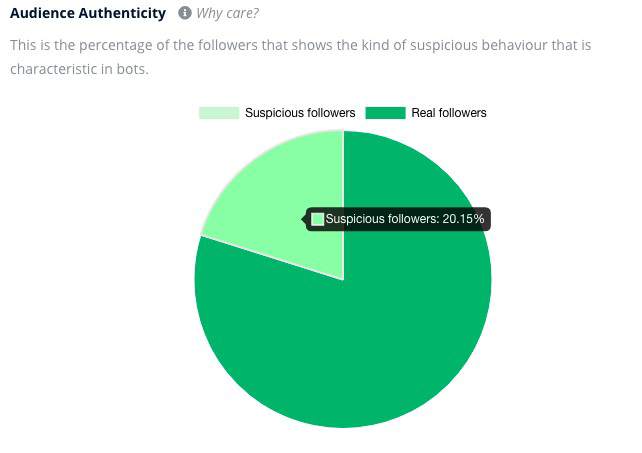
It’s normal for influencers to have a small percentage of followers that look suspicious. But when you see that a more significant portion of the influencer’s audience may be suspect, like in the above chart, it’s not a good sign. Look into the other metrics on this list in tandem to see if you can figure out if the followers are indeed fake.
Conclusion
Whatever method you use to search for influencers, it’s important to analyze that the results you get are authentic. If not, you may end up wasting your marketing budget on bots and miss out on valuable opportunities to promote your brand and its products. So do your due diligence beforehand, so you can confidently choose influencers for your collaborations.
